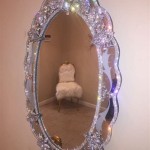How Do I Mirror My iPhone to Computer Using USB?
Mirroring an iPhone's screen to a computer via USB offers several advantages over wireless methods. A wired connection generally provides a more stable, lag-free experience, crucial for activities like gaming, presentations, or demonstrating app functionality. USB mirroring also bypasses potential network congestion issues that can interrupt wireless mirroring. Several methods facilitate this wired mirroring process.
Using QuickTime Player (for macOS)
QuickTime Player, a pre-installed application on macOS, provides a straightforward way to mirror an iPhone to a Mac. Connecting the iPhone to the Mac using a Lightning-to-USB cable is the first step. Opening QuickTime Player follows. Users should then select "New Movie Recording" from the File menu. A recording window will appear. Next to the record button, a dropdown arrow allows users to select the connected iPhone as the camera and microphone input. The iPhone's screen will then be mirrored on the Mac's display.
Utilizing Third-Party Software (for macOS and Windows)
Numerous third-party applications offer screen mirroring functionality for both macOS and Windows. These applications typically offer additional features beyond basic mirroring, such as screen recording, screenshot capture, and device management tools. Researching reputable options and choosing software that aligns with user needs is important. Once the software is installed, connecting the iPhone to the computer via USB is typically required. The software will then guide the user through the mirroring process, which often involves enabling specific permissions on the iPhone.
Reflector 3 (Cross-Platform Option)
Reflector 3 stands out as a popular cross-platform mirroring application compatible with macOS, Windows, and Android. It allows users to mirror their iPhone screens wirelessly or via USB. When using USB, connect the iPhone to the computer. Reflector 3 automatically detects the connected device and initiates the mirroring process, provided the necessary drivers are installed. The application offers a user-friendly interface and provides features such as screen recording and streaming capabilities.
LonelyScreen (for Windows and macOS)
LonelyScreen functions similarly to Apple's AirPlay, allowing users to mirror their iPhone screens to a computer running either Windows or macOS. While primarily known for wireless mirroring, LonelyScreen can also work with a wired connection. Connecting the iPhone to the computer and configuring the software to receive the connection are the primary steps. LonelyScreen provides a relatively simple setup and supports various iOS versions.
Consideration for iOS Version and System Compatibility
Ensuring compatibility between the chosen mirroring method and the iOS version running on the iPhone is essential. Older iOS versions might not be supported by newer mirroring software, while newer iOS versions might have different security protocols affecting compatibility. Consulting the software's documentation for compatible iOS versions is recommended.
Troubleshooting Common Issues
Occasionally, users might encounter issues during the mirroring process. If the iPhone screen does not appear on the computer, checking the USB cable connection for secure attachment is the first step. Restarting both the iPhone and the computer can often resolve software glitches. Verifying that the necessary drivers are installed on the computer for the connected iPhone is also important. Consulting the software's troubleshooting documentation or contacting customer support can provide further assistance.
Trusting the Computer on the iPhone
A crucial step often overlooked when mirroring via USB involves "Trusting" the computer on the iPhone. When connecting the iPhone to a computer for the first time, a prompt will appear on the iPhone asking whether to trust the connected computer. Selecting "Trust" is crucial for enabling data communication and screen mirroring. If this prompt is dismissed or "Don't Trust" is selected, the mirroring process will likely fail. Remedying this requires disconnecting and reconnecting the iPhone, then selecting "Trust" when prompted.
Benefits of USB Mirroring
USB mirroring offers superior stability and reduced latency compared to wireless mirroring. This makes it particularly suitable for tasks where real-time responsiveness is critical, such as mobile gaming or presenting interactive content. The wired connection also ensures a consistent mirroring experience without the potential disruptions that can affect wireless signals. Furthermore, USB mirroring frequently offers higher resolution output compared to wireless solutions.
Alternative Mirroring Methods: AirPlay
While this article focuses on USB mirroring, AirPlay provides a wireless alternative for mirroring to Apple TV or compatible smart TVs. AirPlay utilizes the local Wi-Fi network for screen mirroring, allowing users to stream content from their iPhone to a larger display. However, AirPlay is limited by network dependency, potentially introducing latency or connection instability. USB mirroring remains the preferred choice for scenarios demanding minimal latency and maximum reliability.

Best Ways To Mirror Iphone Pc Via Usb Without Wifi

Newest How To Mirror Iphone Pc Via Usb

How To Mirror Iphone Pc Via Usb

How To Mirror Iphone Windows Pc Laptop Mac Full Guide

How To Mirror Iphone Pc Via Usb 4 Proven Ways Solo Net

4 Ways How To Mirror Iphone Pc Via Usb Airdroid

How To View Android Iphone Screen On Pc Via Usb Airdroid

4 Ways How To Mirror Iphone Pc Via Usb Airdroid

Newest How To Mirror Iphone Pc Via Usb

2024 Updated How To Mirror Iphone Mac With 5 Methods








